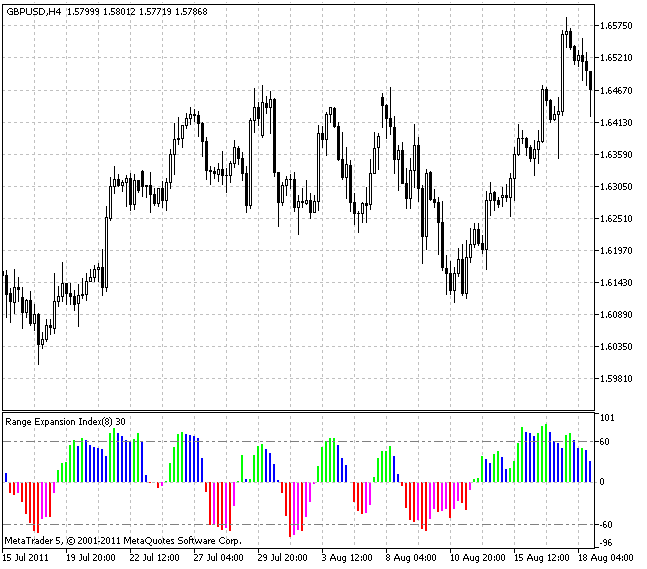Join our fan page
- Published by:
- Nikolay Kositsin
- Views:
- 10365
- Rating:
- Published:
- Updated:
-
Need a robot or indicator based on this code? Order it on Freelance Go to Freelance
Real author:
Earnforex
Range Expansion Index (REI) is an oscillator that measures price changing rate and signals about overbought/oversold areas, in case a price shows weakness or strength. It was developed by Thomas DeMark and described in his book "The New Science of Technical Analysis".
The indicator values change from -100 up to +100. REI is an enhanced oscillator, as it stays neutral during a flat and shows trends only when considerable top or bottom have been reached.
Input parameters:
- REI_Period (default value = 8) - indicator period. While its value is increasing, the number of signals is decreasing but they become more accurate. If the value is decreasing, the number of signals rises but they become less accurate.
Thomas DeMark suggests using the default period equal to 8. It is time to sell when the price crosses level 60 upwards and then goes down and crosses this level downwards. It is time to buy when the price falls below -60 and then goes up past this level.

Translated from Russian by MetaQuotes Ltd.
Original code: https://www.mql5.com/ru/code/529
 Swing Index
Swing Index
Swing Index is a math expression of the operations activity for the last two bars.
 Mass Index (MI)
Mass Index (MI)
The Mass Index is intended for detection of trend reversals based on changes in the bandwidth between the highest and the lowest prices.
 yEffekt
yEffekt
The indicator marks possible trend reversals.
 Instantaneous Trendline
Instantaneous Trendline
Instantaneous Trendline shows buy and sell signals, while crossing the moving averages.